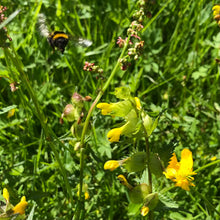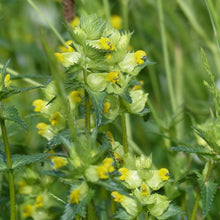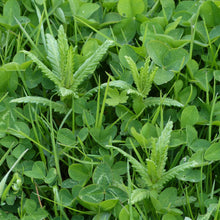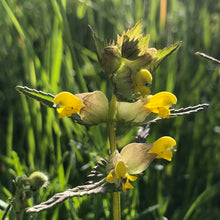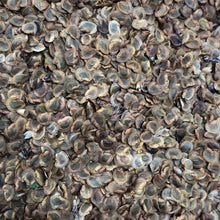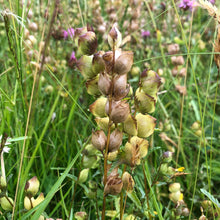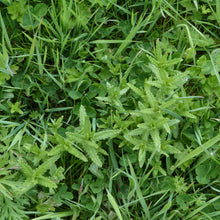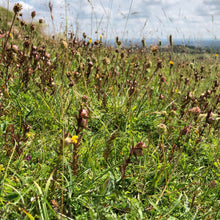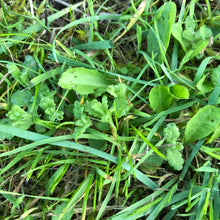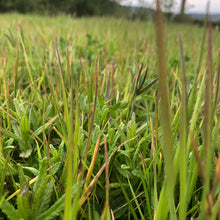
Yellow Rattle (Rhinanthus minor) Seed
Yellow rattle, Rhinanthus minor, is the only single species seed we sell. It can be an important plant for meadow creation. It's otherwise known as Hay rattle, as it was said to herald the harvest when it set seed. It's an attractive annual, quick to appear through existing sward in early spring. Yellow Rattle is hemi-parasitic, like Eyebright - a distant relation - and Mistletoe. This mean that is photosynthesises, but also needs nutrients from a host plant. Rhinanthus significantly reduces the vigour of some other plants, including - most helpfully - grasses. Not all grasses though - the more vigorous, coarser species will overwhelm it. If you have lots of the thug in chief - perennial rye grass - in an area where you want to have Rattle, I'm afraid it's a lost cause. Some plants, like plantains and Oxeye daisy, have developed their own strategies to resist Yellow Rattle, so do well in swards with large Rhinanthus populations.
Once common but disliked by farmers - unsurprisingly - Yellow rattle is an attractive plant with a yellow snapdragon type of flower which pollinators find helpful too, particularly bumblebees and butterflies. It's said to represent a cockscomb, hence another of its synonyms.
Yellow rattle is an important part of most of our seed mixes, but as an individual species it can be added to existing grass if it is cut very short and raked or chain harrowed to open it up. If you're doing this, aim to have at least 50% of the earth showing, and tread in or lightly roll the seeded area to ensure good soil contact. Rattle must be sown in late summer up to the year end; the seed needs to get cold to germinate. Avoid cutting the seedlings as they appear, and the developing plants will significantly reduce the vigour of grasses, enabling other wildflowers to compete with them more effectively. When they die back they leave a helpful space for other species to use. We've written more about Rattle in our blog.
Our Seed
Rhinanthus seed has limited viability over time so we always make sure we supply the freshest seed available. It also needs to be processed carefully, which goes some way to explaining the cost of it. We think there at least 6 different subspecies in the UK, which vary a fair bit visually.
Our seed is all UK origin. Over the season we offer several options of English seed, harvested from an upland farm in Northumberland on neutral soil - "Northern England" - or lowland sites in Dorset and Somerset ("Southern England") as well as from working farms in Warwickshire and Exmoor. We also offer Welsh origin seed in small quantities too.
Generally speaking the sites harvested in England are neutral or calcareous, and the Welsh sites are neutral to slightly acidic.
We have our Yellow Rattle seed independently tested for successful germination, and ask harvesters for at least 90% viability.
Please sow between August and end December.
Yellow rattle seed is available in larger quantities at our Habitat Aid website.
Supplier: Heritage Seeds, Kevin Wharf, Higher Blacklands Farm, Bright Seeds, Will Steel










